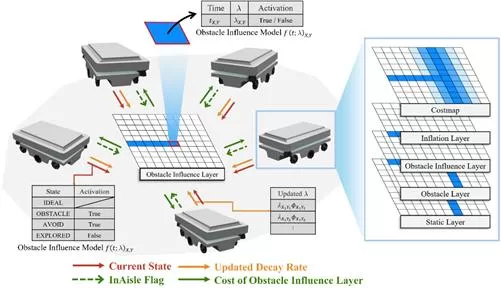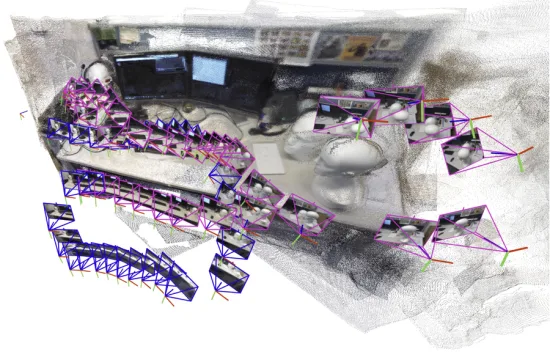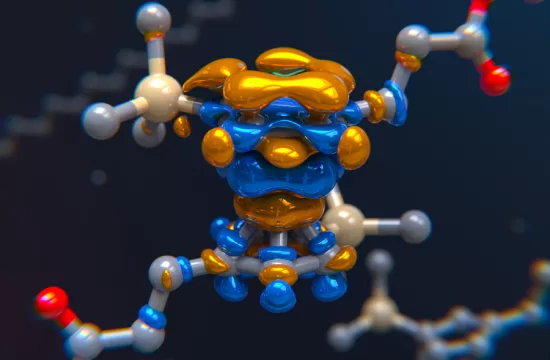
Researchers have developed a new “Physical AI” technology that improves the efficiency of multi-robot autonomous navigation by modeling the spread and forgetting of social issues.
This achievement is expected to become a key technology for boosting the productivity of autonomous mobile robots in logistics centers, large-scale warehouses, and smart factories.
Autonomous Mobile Robots (AMRs) play a central role in automation across logistics and manufacturing sites. However, in real-world operations, unexpected obstacles, such as forklifts, work lifts, or unexpectedly placed cargo, often disrupt smooth movement.
Until now, robots have reacted only to immediate situations and adjusted their routes accordingly, leading to unnecessary detours and delays, and ultimately, diminished productivity.
To address this challenge, Professor Kyung-Joon Park’s team applied a unique phenomenon of human society to robots. They focused on how certain events or issues spread rapidly and are then gradually forgotten.
A research team led by Professor Kyung-Joon Park of the Department of Electrical Engineering and Computer Science and the Physical AI Center at DGIST (President Kunwoo Lee, mathematically modeled this process and incorporated it into a collective intelligence algorithm for robots.
Consequently, the robots were able to naturally forget unnecessary information, immediately share only the important details, and achieve more efficient cooperative navigation.
In the actual experiments, the team utilized the “Gazebo simulator,” which replicates a logistics center environment. The results showed that the new technology increased task throughput by up to 18.0% and reduced average driving time by up to 30.1% compared to conventional ROS 2 navigation. This demonstrates that robots are no longer merely machines that avoid obstacles; they are evolving into Physical AI systems that can comprehend social principles and operate autonomously.
Another valuable feature of this technology is its ease of application. It can be implemented using only 2D LiDAR without additional sensors, and has been developed as a plugin compatible with the ROS 2 navigation stack.
This implies that it can be applied directly to existing autonomous navigation systems without the need for complex equipment, enabling rapid deployment in industrial settings such as drone swarms, autonomous vehicles, and logistics robots.
Particularly, it is expected to play a significant role in implementing cooperative autonomous navigation systems for smart city traffic management as well as large-scale exploration and rescue operations.
Professor Kyung-Joon Park stated, “We have mimicked the social principle of forgetting unnecessary information while retaining only important information to enable efficient movement. This study is significant in that it shows how Physical AI is evolving to resemble human behavior.
This study was co-authored by integrated master’s and doctoral students Jiyeong Chae and Sanghoon Lee as the first authors. Corresponding author Professor Kyung-Joon Park, who also serves as the CTO of the Physical AI startup, S innovations Co., Ltd., was actively involved in lowering the cost barriers to introducing AMRs in industrial settings. The study was supported by the AI Fellowship program funded by the Ministry of Science and ICT, and was published on September 10, 2025 in the Journal of Industrial Information Integration—an international journal ranked among the top 2% journals in the industrial engineering field by the Journal Citation Reports (JCR).







